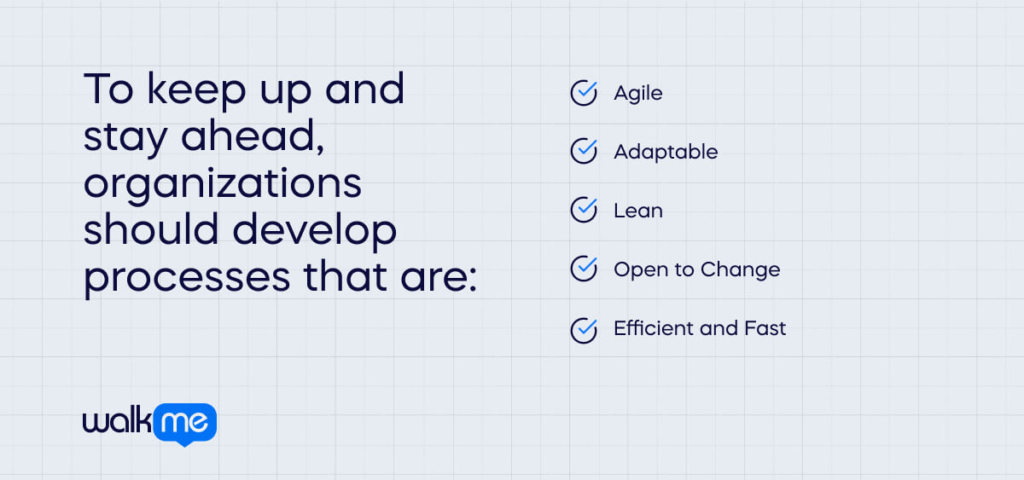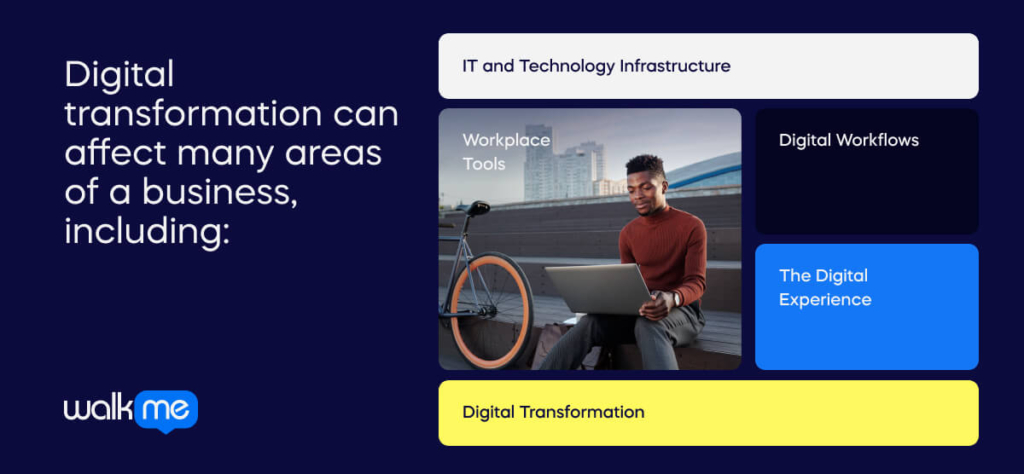In the digital age, businesses need to develop modern, relevant strategies for organizational transformation.
Below, we will examine:
- 4 core business areas that can be evaluated and improved
- 20 strategies that can enhance organizational performance
- Tips and best practices for staying modern and competitive in the digital age
First, let’s look at why organizational transformation is a top concern for modern companies.
Why Organizational Transformation?
The digital economy is changing rapidly, transforming every aspect of the global business environment.
In order to stay relevant and competitive, organizations must change the way they:
- Communicate with customers and business partners, as well as internally
- Operate
- Use digital tools and technology
- Deliver value
Among other things.
Below, we will look at some strategies and approaches that can help organizations stay modern and competitive in this changing landscape.
20 Strategies for Organizational Transformation
Here are 4 core business areas to consider when developing strategies for organizational transformation:
1. Transforming Organizational Processes
Processes, procedures, and workflows all directly affect an organization’s efficiency and effectiveness.
Digital technology has enabled new, innovative business models that can offer significant productivity gains.
To keep up and stay ahead, organizations should develop processes that are:

- Agile – Agile business processes focus on collaboration, communication, and responsiveness
- Adaptable – Organizations and strategies should be able to adapt quickly and efficiently, especially in today’s ever-changing marketplace
- Lean – Lean business approaches build solutions based on user feedback, then improve them incrementally based on that data
- Open to Change – Just as organizational strategies should be adaptable, business processes, procedures, and functions should also be ready to evolve
- Efficient and Fast – Speed is a competitive advantage in today’s marketplace … after all, innovative products that hit the market first often have a major advantage over latecomers
Strategic priorities such as these can offer a variety of benefits, from cost savings to better profit margins.
2. Transforming the Climate, Culture, and Workforce
The corporate climate also plays a critical role in organizational productivity.
For instance, a workforce’s proficiency, performance, and engagement all have a direct effect on an organization’s bottom-line results.
- Reposition the Role of HR – HR can add significant value to an organization’s bottom line, by improving metrics such as employee productivity, retention, and motivation
- Improve the Employee Experience – The employee experience has also become a strategic imperative for many businesses, because it can impact worker engagement, motivation, and similar metrics
- Develop a Digital Adoption Function – Because digital transformation drives the continual adoption of new digital technology, businesses should make digital adoption a top strategic priority
- Enhance the Workplace Culture – Cultural traits such as innovation, digital literacy, or pro-learning mindsets can help a workforce stay modern, relevant, and productive
- Evolve the Change Management Function – A sophisticated, advanced change management department will be able to drive organizational transformations more efficiently and effectively
In short, the efficiency and climate of the workplace make big differences in productivity.
3. Strategic Transformations
Another area to transform is the organization’s strategy, values, and mission.
After all, organizations that are pursuing obsolete or inappropriate strategies are less likely to perform well in their industry.
Here are a few principles that can help organizations survive and thrive in today’s economy:
- Innovation – During the current digital revolution, innovation can help businesses develop profitable products and services, transform and enhance business processes, and more
- Digital-First – A digital-first business strategy aims to use technology to its fullest extent in order to improve a variety of business areas, from the customer experience to internal processes
- Customer-Centric – The customer experience plays a major role in customer acquisition, retention, and lifetime value
- Forward-Thinking – What works today won’t necessarily work tomorrow, so when designing organizational transformation projects, it pays to keep an eye on the future
- Speed – Another focal point of organizational strategy should be speed, because, as mentioned, those who move fastest often dominate their competitors
In today’s fast-paced economy, characteristics such as these are survival traits – not luxuries.
4. Digital Transformation
Finally, organizations should incorporate digital transformation strategies into their overall organizational strategy.
Because the global business economy is becoming fully digital, every business must “digitalize” in order to even participate in that economy.
Digital transformation can affect many areas of a business, including:

- Workplace Tools – Organizations that use obsolete tools are at a disadvantage, so organizations should do everything they can to use tools that are modern, efficient, and profitable
- IT and Technology Infrastructure – The quality of equipment and infrastructure can affect security, the performance of business technology, and even the experiences of employees and customers
- Digital Workflows – Investments in modern, digital work processes, such as online collaboration and SaaS-powered workflows, can deliver massive gains across an organization
- The Digital Experience – The digital user experience, whether those users are customers or employees, can affect engagement levels, productivity, and more
- Digital Transformation – Digitalizing the business involves software implementation, employee training, transforming business processes, and more … all of which can help keep an organization modern and competitive
As with the other strategic changes covered here, every organization should initiate changes carefully and systematically. In other words, they should implement organizational change management methodically and intentionally.

